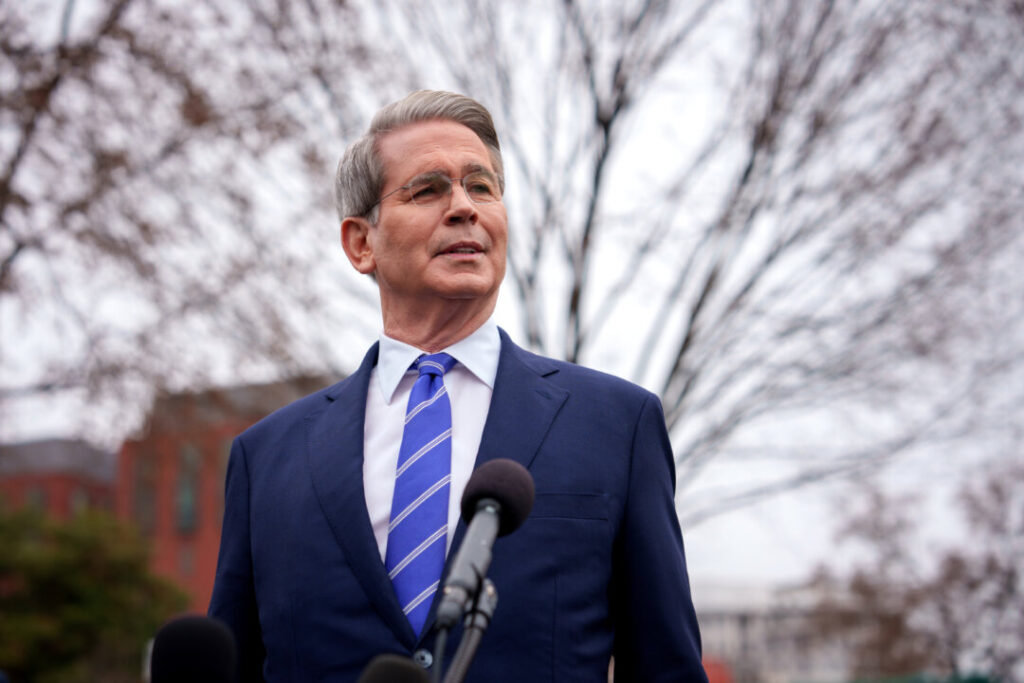The funds generated by the tariffs will fund proposals to scrap the taxes on tips, overtime and Social Security benefits, the Treasury Secretary said.
Treasury Secretary Scott Bessent said consumers could see a price increase of around 2% for every 10% of the new tariffs imposed on foreign goods, and income from the tariffs will be used to reduce the cost of living for low-income Americans.
He noted that under President Donald Trump’s first term, the actual inflation effect of tariffs was significantly lower.
“If there’s a 10% tariff, the currency will appreciate that 40%, that 4%. Then producers from other countries eat about 4%, and US consumers may get a 2% price adjustment once.” “So, with a 10% tariff, the consumer may pay that 2%.”
However, Bessent noted that real-world data suggests that actual costs to consumers are significantly lower. For example, he referenced a study showing that the approximately 20% tariffs imposed on China during Trump’s first period increased U.S. consumer prices by just 0.7%.
“If we can put a 20% tariff, have foreigners pay it, and use that money to lower the government’s deficit and keep taxes low here, this is a very unique formula that hasn’t been tested in this country for a long time,” Bescent said.
He said the administration has already raised hundreds of millions of dollars from new Chinese tariffs, along with the $35 billion a year generated by tariffs from Trump’s first term. Bessent predicted annual revenue from the full tariffs announced on April 2nd (Trump’s defending it as “liberation day” could ultimately reach $300 billion to $600 billion.
The Treasury Secretary said the income would fund four major proposals aimed at supporting low-income Americans. Tips, Social Security, tax elimination on overtime allowances, and pay interest on US car loan tax credits.
“Think about what the president is doing here,” Bescent said. “He is a person who benefits from all four of these programs, so he is favored by the affordable solutions for the lower 50% of wage earners.”
Yale estimates that tariffs on April 2 were expected to raise the average effective tariff rate to 11.5%, with consumer prices rising 1.3%. Considering all tariffs for 2025 (including steel and aluminum and foreign retaliation), the average effectiveness rate will reach 19.8%, with projected inflation increasing by 2.31%.
The interview coincided with a speech by Federal Reserve Chair Jerome Powell. Jerome Powell said tariffs could cause temporary increases inflation, and the impact could last longer under certain conditions.
Powell said the Fed’s job is to ensure that one-time price hikes do not evolve into a sustained inflation problem. It needs long-term inflation expectations, he said, as it remains entrenched around the Fed’s 2% target.
Recent consumer surveys have seen high prospects for near and long-term inflation.
Meanwhile, Trump worked on a true society to encourage Powell to lower interest rates.
“This is the perfect time for Fed Chairman Jerome Powell to cut interest rates,” Trump wrote. “He’s always ‘slow’, but he can now change his image, and quickly. ”
“Energy prices have fallen, interest rates have fallen, inflation has fallen, even eggs have fallen 69%, and all jobs have increased within two months. “Cut your interest rates, Jerome, and stop politics!”



